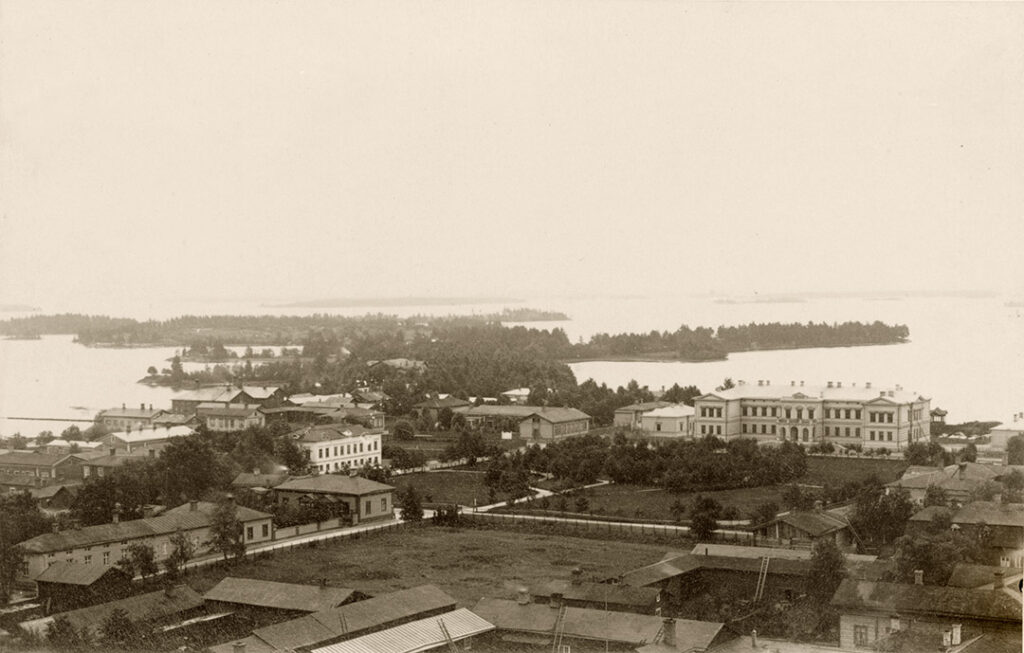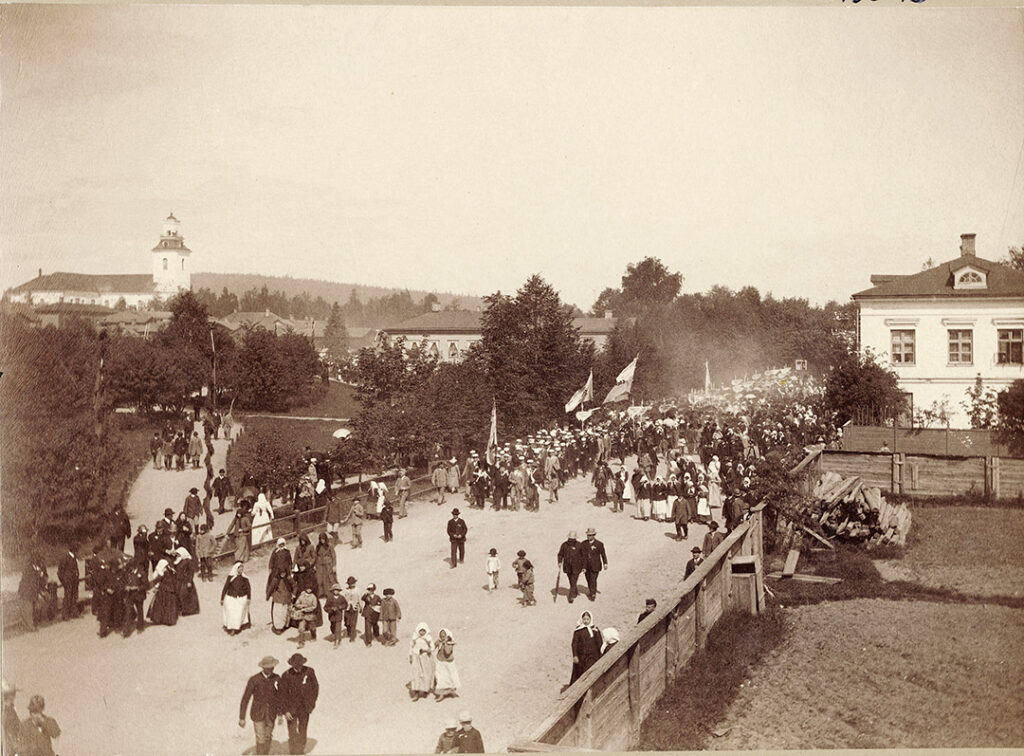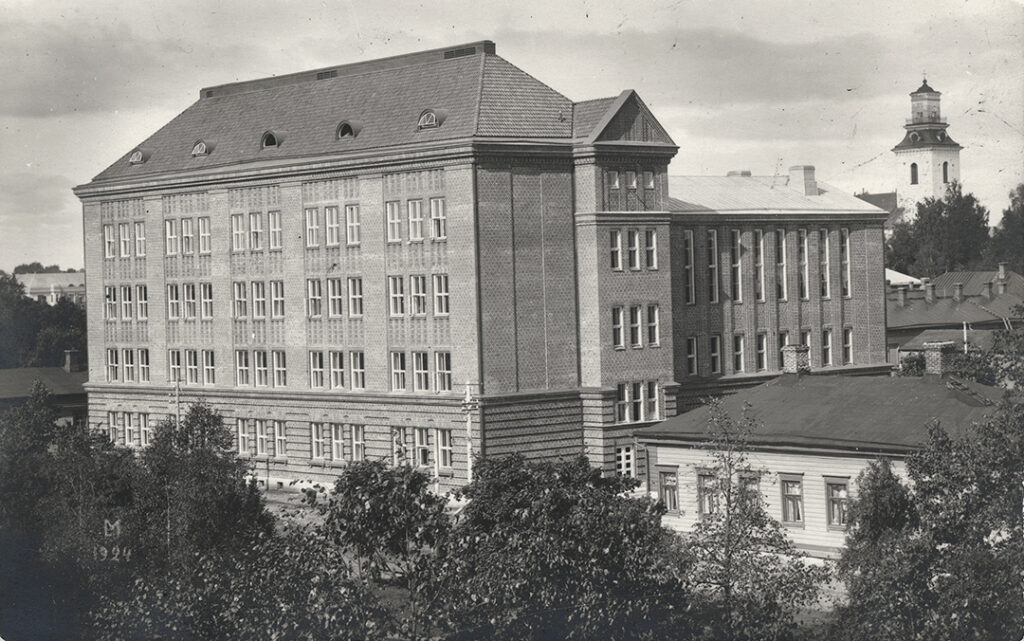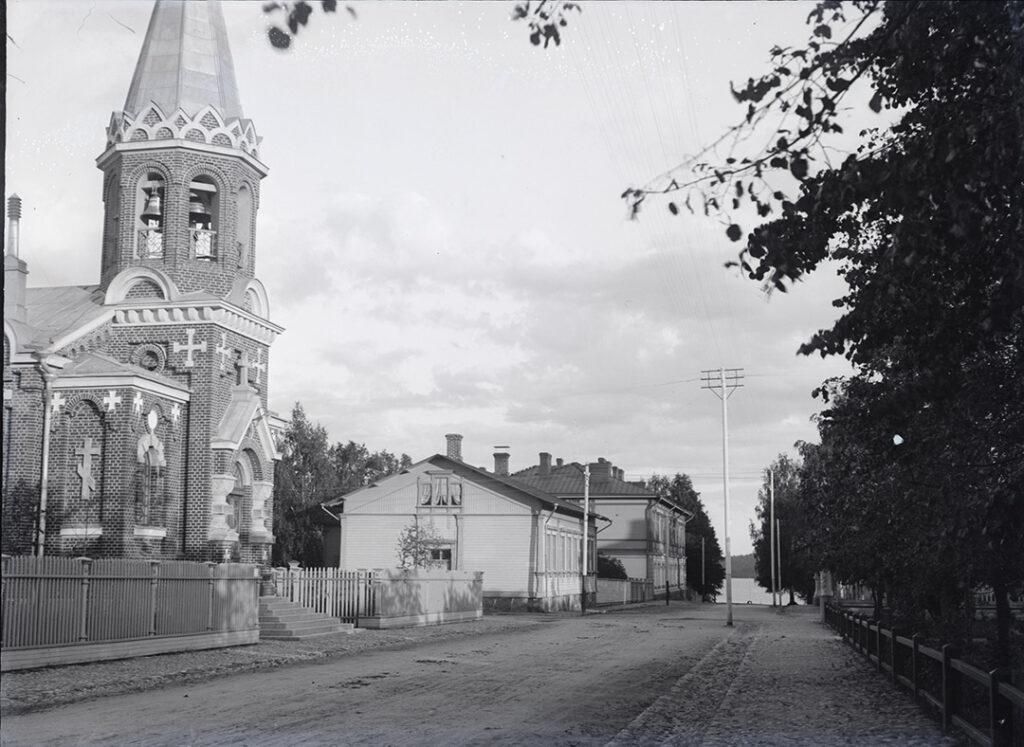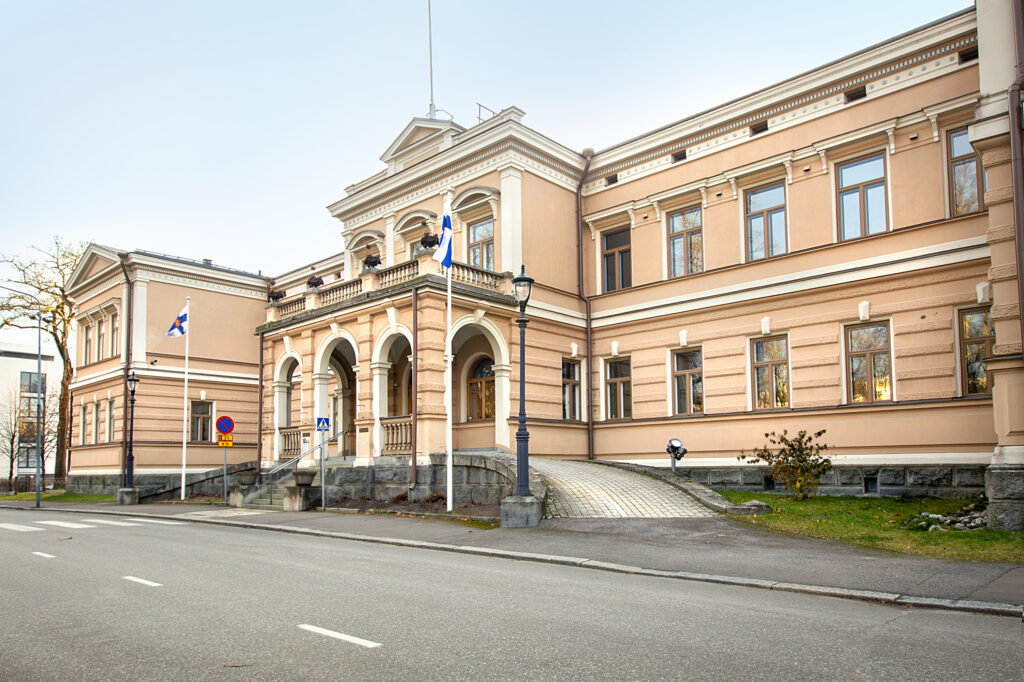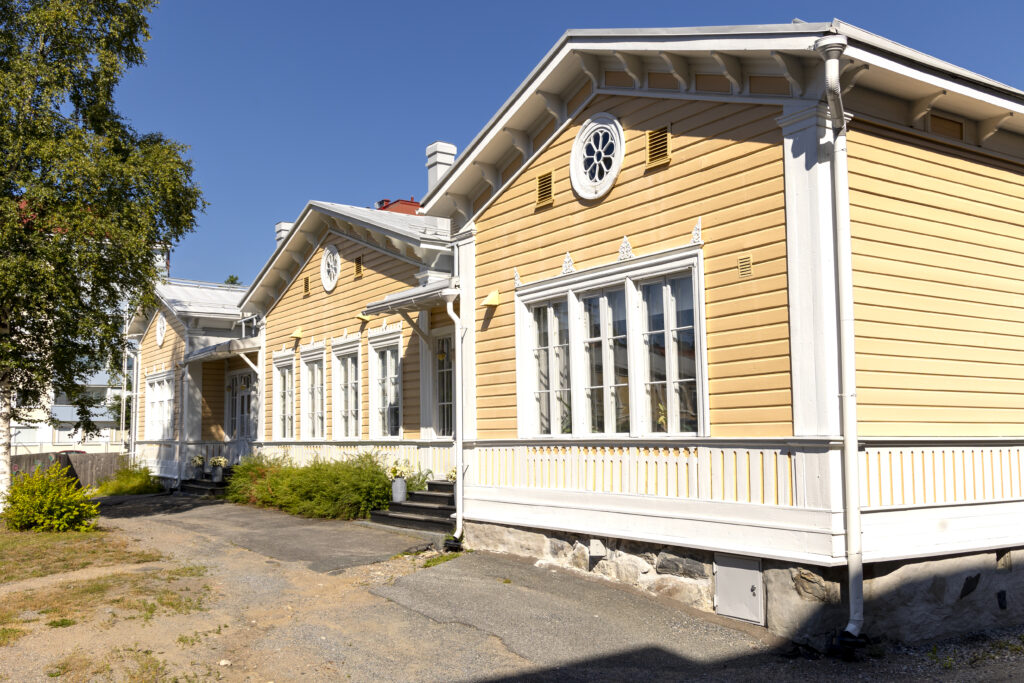Piispanpuisto Park
Piispanpuisto Park and its surroundings represent old Kuopio, which tells about the diverse history of the area as a center of administrative, ecclesiastical, and educational activities. The Governor General of Finland, Count Pietari Brahe, founded the first city of Kuopio in 1653, the centre of which was the area around Piispanpuisto Park and its churches. The park got its name from the bishop’s house on its western edge, which was built by Bishop Frosterus.
In old maps, the area has been called government square and residence square. The area’s history as a park began in the mid-1880s, close to the time when the county government’s building was completed on the park’s southern side. In the park, there are monuments to the churches that used to be located there and to the first founder of the city, Pietari Brahe.
Neoclassical park environment
In Piispanpuisto Park, nuances of neoclassicism can be seen in the curved lines of the border corridors and in the park’s centre. The edges of the central corridor parallel to Maaherrankatu Street and the central square have previously had spectacular summer flower plantings for several decades. The trees in the area mainly consist of linden and Siberian pine trees, some of which are nearly 100 years old.
Archaeological excavations have been carried out in the park, where it was found that burials have been preserved in the area, except for the peripheral areas. In addition, the studies made observations related to church buildings and fences.
History of administration, churches and educational institutions
- The former Livestock College (1852), a yellow stone building located east of Piispanpuisto Park, is one of the oldest buildings in the area. It was built by county surveyor Carl August Rehnström. Originally two-story building was raised in 1922. The building is still known as ‘’Livestock College’’ that operated in the premises from the 1920s to the 1980s. After that, it housed a land surveying office. Before it was used as a college, the building housed the collections of the Kuopio Patriotic Society and the Kuopio Nature Conservation Association (Kuopio Museum).
- Saint Nicholas Cathedral (1904, Aleksander Isaksson) is located on the eastern edge of Piispanpuisto Park. A brick pattern is painted on the plastered facade of the building. After the wars, in 1944, Kuopio became the center of the Finnish Orthodox Church, and the cathedral became its center. On the same lot, behind the cathedral, locates a parish hall designed by Toivo Paatela from the 1950s.
- County Government (1885, Konstantin Kiseleff) is a light, two-story stone building located at the southern end of Piispanpuisto Park, which represents neo-renaissance that became popular in the 19th century. In addition, a land surveying office and an outbuilding were built on the sides of the plot. On the first floor were the offices of the governor and on the second floor were the living quarters and representative rooms. At one time, the complex once included a large garden with gazebos that stretched all the way to the shore of Kuopionlahti Bay. The building underwent a major renovation in 2021–2022, where modern office spaces were renovated.
- The Bishop’s House (1856, Carl Ziegler) is a swiss-style empire building on the west side of Piispanpuisto Park. The house was built by the bishop of the diocese, Robert Valentin Frosterus. In the 19th century, the building served as a craft school for the Ladies’ Association. In the 20th century, it grew into a significant educational institution, known for e.g. as a home and arts and crafts academy, a craft and arts academy, and a design academy.
- Kallavesi Senior High School (1924, Magnus Schjerfbeck) is a red brick school building located north of Piispanpuisto Park. The originally four-story building was raised by one floor after an attic fire in the 1950s. The building was originally made for Kuopio’s Finnish-speaking girls’ school, which in 1928 became a Girls’ High School. During the World War II, the building housed a military hospital. Since 1973, the school building has functioned as Kallavesi Joint High School and since 1975 as Kallavesi High School.
